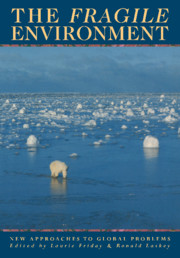2 - The future of forests
Published online by Cambridge University Press: 03 May 2010
Summary
Introduction
Forests are arguably the most important vegetation zone on the face of the earth today. They play a far greater role in the well-being of the planetary ecosystem than they are often given credit for, and we may soon find that forests will effectively be called upon to make a still more critical contribution to planetary stability. Yet on every side, from the equator to the arctic, forests are being depleted or will shortly be depleted through human agency at a rate that could well reduce many of them to impoverished remnants by the end of the next century. Indeed, forests, which have been the predominant form of vegetation on our planet for hundreds of millions of years, may soon become a minority presence – whereupon we shall discover (by default) the full measure of their part in underpinning the ecological welfare of our biosphere.
What is the nature and scope of the role of forests in planetary workings? By ‘forests’ I mean tree-dominated communities with substantial canopies, Fig. 2.1 (by contrast with woodlands which feature much sparser tree cover) that are the repository of a greater abundance and diversity of terrestrial life forms than the rest of the earth put together. Tropical forests are specially rich in species and in the evolutionary capacity to generate new species. As tropical forests are cleared wholesale, there will be an impoverishing impact on the very course of evolution itself.
Moreover, forests help to regulate the hydrodynamics of great watersheds and river basins such as those of the Ganges and the Amazon.
- Type
- Chapter
- Information
- The Fragile EnvironmentThe Darwin College Lectures, pp. 22 - 40Publisher: Cambridge University PressPrint publication year: 1989
- 6
- Cited by

